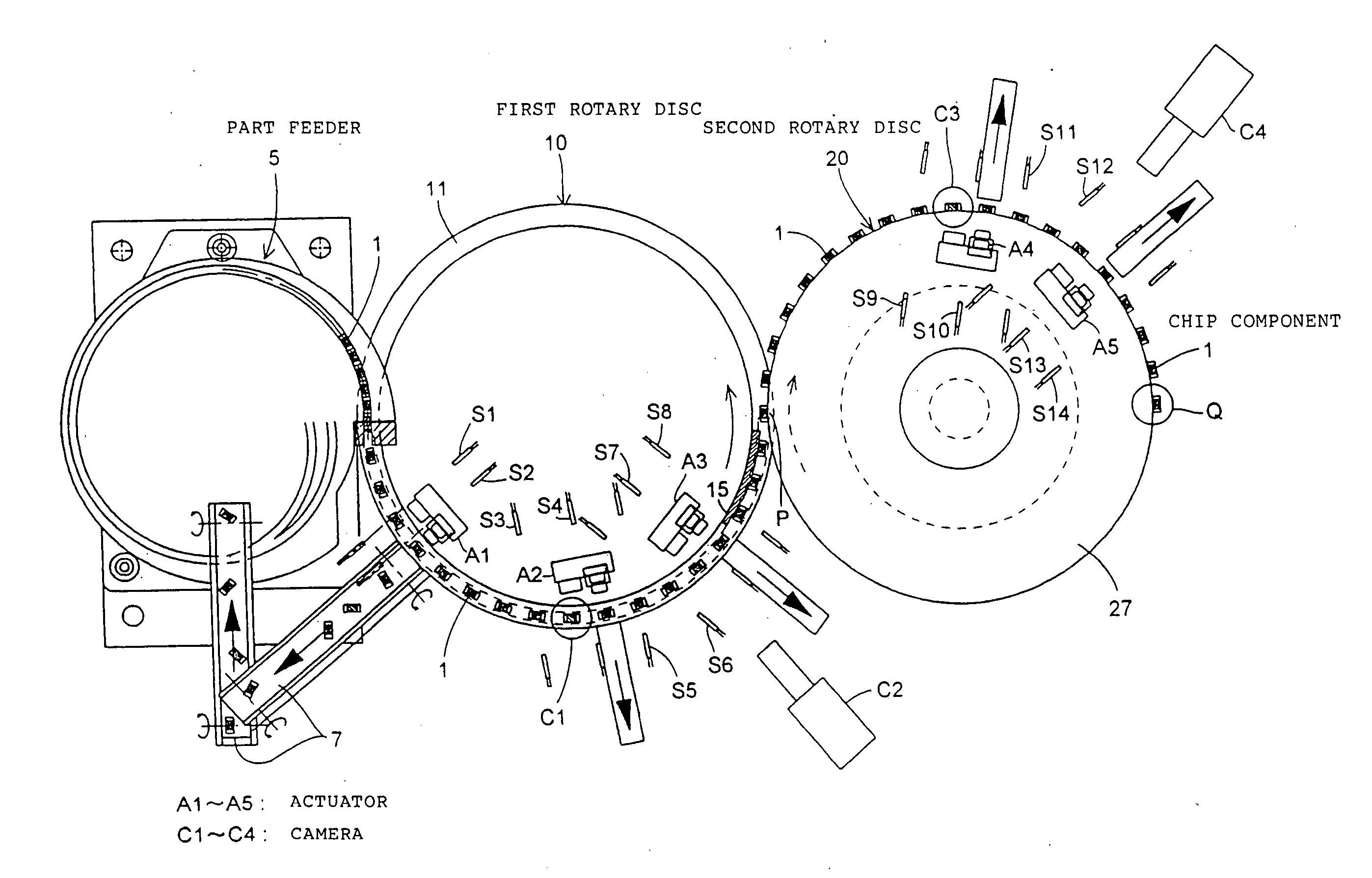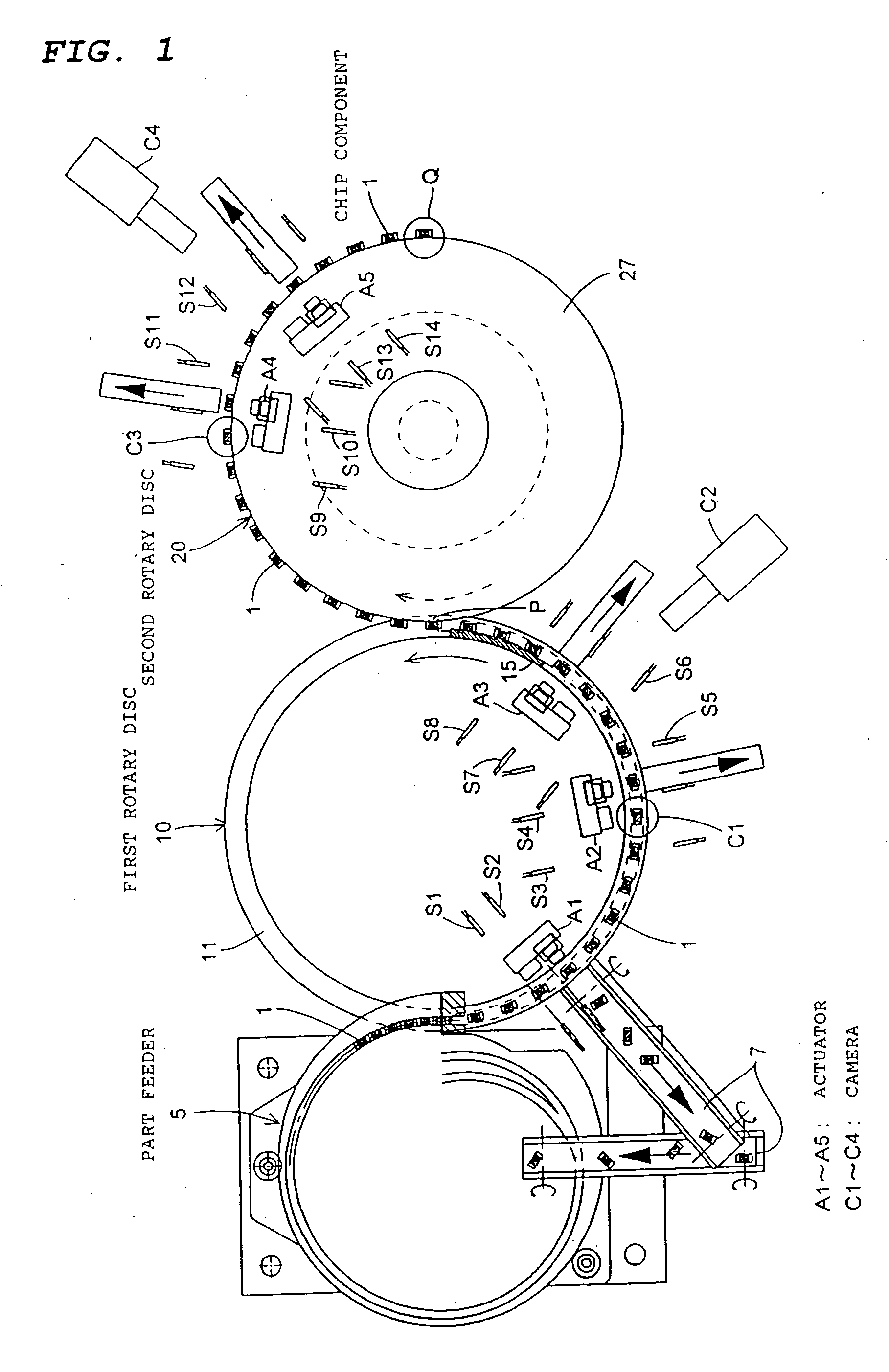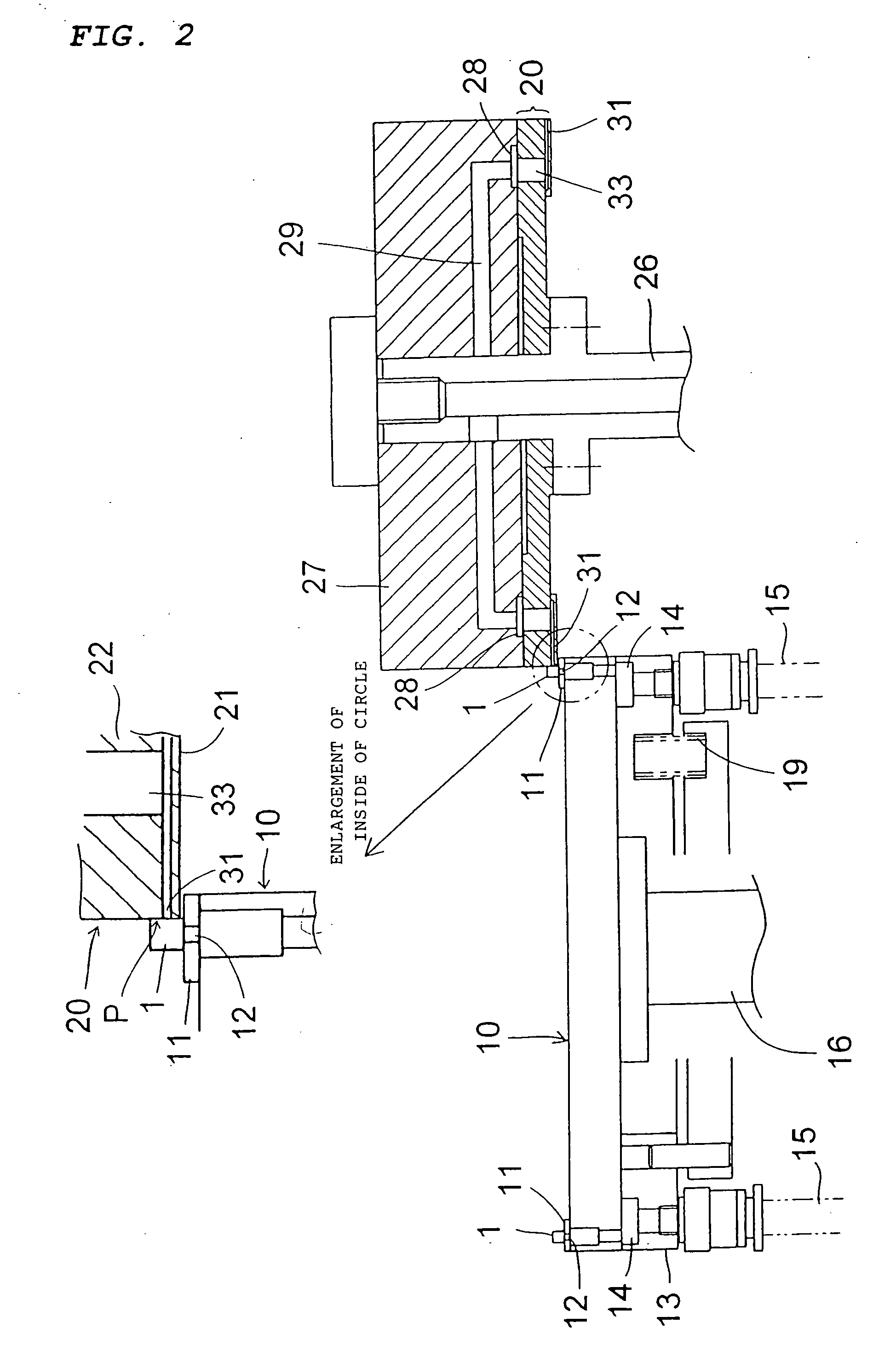Chip Component Carrying Method and System, and Visual Inspection Method and System
a technology of carrying method and component, applied in the direction of conveyor parts, transportation and packaging, instruments, etc., can solve the problems of incorrect workpiece attitude, inability to earn throughput, and inability to stabilize the attitude of workpieces, so as to improve the delivery of workpieces, stabilize the delivery operation, and carry workpieces stably
- Summary
- Abstract
- Description
- Claims
- Application Information
AI Technical Summary
Benefits of technology
Problems solved by technology
Method used
Image
Examples
embodiment 1
[0096] According to this embodiment 1, it is possible to obtain the following advantages.
[0097] (1) Because a configuration is used in which the chip component 1 serving as a workpiece is sucked and held on a horizontal plane of the first rotary disc 10 and carried and then sucked and held on the vertical plane of the second rotary disc 20 and carried, chip components can be transferred from the first rotary disc 10 to the second rotary disc 20 independently of the fluctuation of the thickness of a chip component, and the chip-component delivery operation is securely performed. A trouble due to the fluctuation of the thicknesses of chip components or breakage of a chip component which occurs in a conventional example as shown in FIGS. 6 and 7 does not occur. Moreover, it is possible to transfer a chip component without changing the attitude of the chip component (without vertically or horizontally reversing the attitude) and stably carry the chip component.
[0098] (2) By continuousl...
embodiment 2
[0102] Embodiment 2 of the present invention is described by referring to FIG. 9 to FIGS. 15A and 15B. In these drawings, the first rotary disc 10 and second rotary disc 20 constitute the carrying system of a rectangular-parallelepiped chip component serving as a workpiece and a configuration in which the chip components 1 are successively supplied to the chip located plane (upside) 11 on the outer margin of the first rotary disc 10 from the part feeder 5 is the same as the case of the embodiment 1.
[0103] In this case, when supplying a chip component from the part feeder 5 to the first rotary disc 10, the chute portion of the part feeder 5 is set to the upside of the chip located plane 11 of the first rotary disc 10 as shown in FIG. 10. However, a small gap is necessary so that the first rotary disc 10 does not interfere with the chute portion of the part feeder 5. Moreover, when delivering the chip component 1 to the first rotary disc 10, it is necessary to minimize the distance D ...
embodiment 3
[0116]FIG. 16 shows embodiment 3 of the present invention, in which the arrangement of a camera serving as imaging means for performing visual inspection is changed. In this case, first camera C1, second camera C2 and fourth camera C4 serving as imaging means are arranged by facing the carrying route of the chip component 1 of the first rotary disc 10 and third camera C3 is set by facing the carrying route of the chip component 1 of the second rotary disc 20. The first camera C1 corresponding to the carrying route of the first rotary disc 10 images and inspects (image processing inspection) the upside of the chip component 1, second camera C2 images and inspects one lateral of the chip component 1, fourth camera C4 images and inspects the other lateral of the chip component 1, and third camera C3 corresponding to the carrying route of the second rotary disc 20 images and inspects the downside of the chip component 1, which are CCD cameras or line sensors. In this case, a chip compon...
PUM
| Property | Measurement | Unit |
|---|---|---|
| length | aaaaa | aaaaa |
| width | aaaaa | aaaaa |
| width | aaaaa | aaaaa |
Abstract
Description
Claims
Application Information
 Login to View More
Login to View More - R&D
- Intellectual Property
- Life Sciences
- Materials
- Tech Scout
- Unparalleled Data Quality
- Higher Quality Content
- 60% Fewer Hallucinations
Browse by: Latest US Patents, China's latest patents, Technical Efficacy Thesaurus, Application Domain, Technology Topic, Popular Technical Reports.
© 2025 PatSnap. All rights reserved.Legal|Privacy policy|Modern Slavery Act Transparency Statement|Sitemap|About US| Contact US: help@patsnap.com



